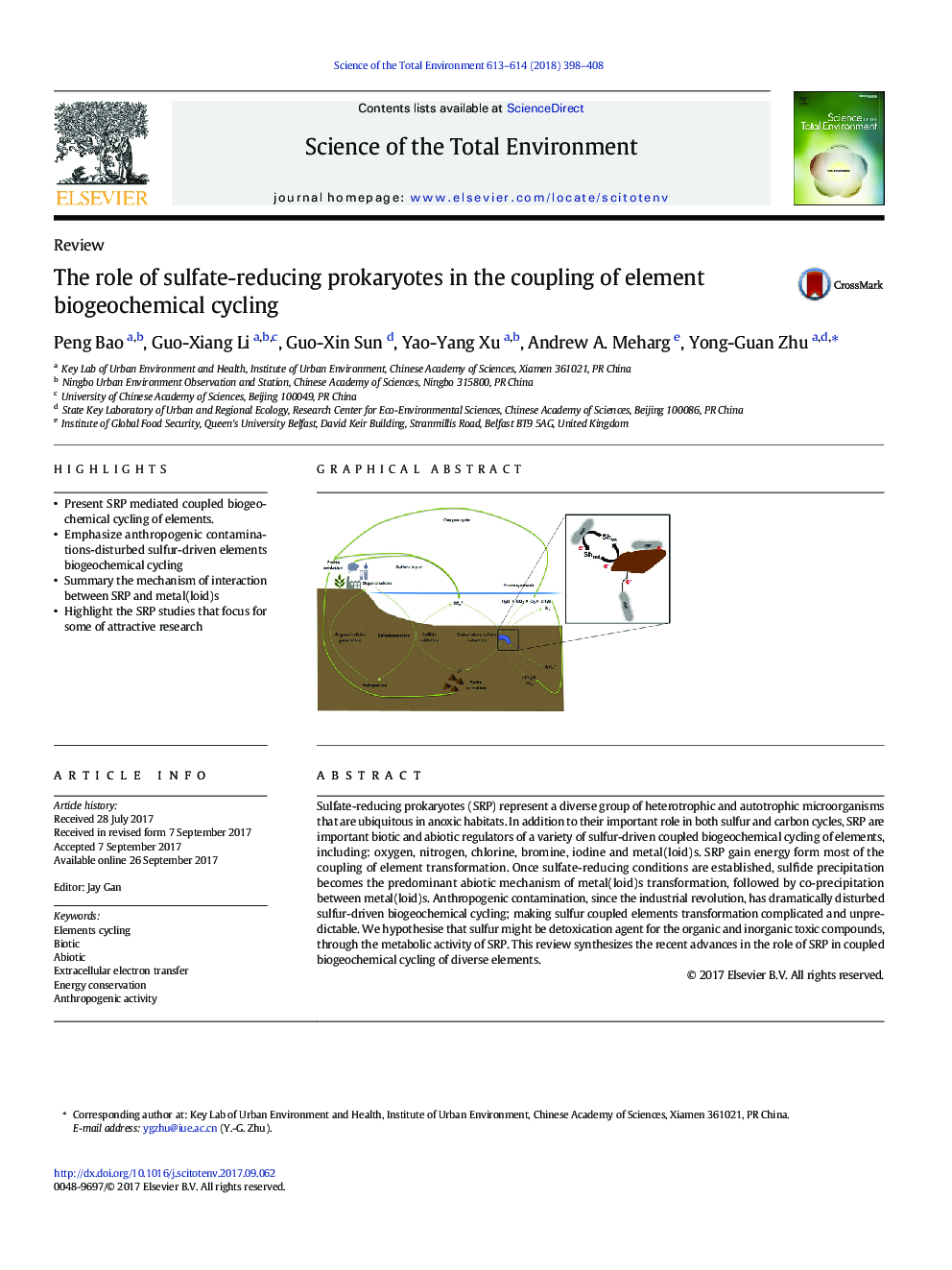| کد مقاله | کد نشریه | سال انتشار | مقاله انگلیسی | نسخه تمام متن |
|---|---|---|---|---|
| 5750102 | 1619690 | 2018 | 11 صفحه PDF | دانلود رایگان |
- Present SRP mediated coupled biogeochemical cycling of elements.
- Emphasize anthropogenic contaminations-disturbed sulfur-driven elements biogeochemical cycling
- Summary the mechanism of interaction between SRP and metal(loid)s
- Highlight the SRP studies that focus for some of attractive research
Sulfate-reducing prokaryotes (SRP) represent a diverse group of heterotrophic and autotrophic microorganisms that are ubiquitous in anoxic habitats. In addition to their important role in both sulfur and carbon cycles, SRP are important biotic and abiotic regulators of a variety of sulfur-driven coupled biogeochemical cycling of elements, including: oxygen, nitrogen, chlorine, bromine, iodine and metal(loid)s. SRP gain energy form most of the coupling of element transformation. Once sulfate-reducing conditions are established, sulfide precipitation becomes the predominant abiotic mechanism of metal(loid)s transformation, followed by co-precipitation between metal(loid)s. Anthropogenic contamination, since the industrial revolution, has dramatically disturbed sulfur-driven biogeochemical cycling; making sulfur coupled elements transformation complicated and unpredictable. We hypothesise that sulfur might be detoxication agent for the organic and inorganic toxic compounds, through the metabolic activity of SRP. This review synthesizes the recent advances in the role of SRP in coupled biogeochemical cycling of diverse elements.
166
Journal: Science of The Total Environment - Volumes 613â614, 1 February 2018, Pages 398-408
